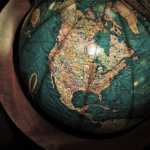Facial recognition technology has spread rapidly in Japan as in the rest of the world. You can unlock your smartphone, tablet or computer with your facial features, but it does not stop there. Companies and governments benefit from this new technology too. But will it lead to mass surveillance? Let’s review the situation.
Table of Contents
How Does Facial Recognition Work?
Of course, it’s not specific to Japan. But if you are new to this technology, here is a simple explanation of how it works. Facial recognition was developed to improve safety – but it does not improve privacy, unfortunately. It is also more convenient, so most smartphones are nowadays equipped with a recognition system. But how does it work?

- You take a picture or record a video of your face looking straight at the lens.
- This data is stored in one or several databases. The distance between the different parts of your face, their size, shape and what makes your face distinctive (a system identify around 70 specific features) is analyzed and saved.
- The software reads your features and your facial geometry every time you try to unlock your phone. The NEC NeoFace technology has a matching speed of a million per second and works even though the person wears glasses or grows his beard.
- The data collected is compared to a database and the system determinates if you are the right person.
But more than telling if you are the right person, this technology can (or will be able to) tell who you are. Several databases will concentrate millions of facial images and will be used for many other purposes.
What Japan Use Facial Recognition For
As of today, Japanese companies have developed or are developing software to improve facial recognition and to start using it for different aims.
Supported by the government, the NEC company has created a system that can recognize someone when he or she walks. Thanks to deep learning, it can identify a person even if the resolution is low – but for that, the database must be big enough. It could be used in airports or other public places against terrorism or illegal entries. Also, the system will be able to recognize someone suspicious and thus avoid incidents.

With the coming Olympics and Paralympics, the government has invested even more in this technology, so that tourists can be identified and checked automatically at more than a hundred airports. Inside the stadiums, participants will be recognized thanks to an NEC system, based on special ID cards created just for this occasion. It will not, however, be used for spectators, who will have to show their tickets as usual.

Hotels and other establishments are also thinking of using facial recognition to recognize customers automatically and facilitate the check-in, but also to prevent questionable people from entering or staying in their buildings.
One day, people may also be able to pay without a credit card, without a phone, without cash. Besides, banking companies would like to use this technology for ATMs or registers, and big companies to offer their customers a “pay-with-your face” option.
Benefits

- Quicker than any other kind of checking.
- Secure: it depends on the brand since Apple stated that its system is more secure than the fingerprint authentication, unlike Samsung. NEC also claimed that its system can differentiate twins.
- A camera only is needed, unlike retinal, fingerprint, voiceprint, iris or vein authentification.
- Depending on the system, it can recognize someone moving, even a bit far, or if the camera quality is bad.
- It is easier to check if the system is right by comparing a photo and the person’s face, unlike for fingerprints or veins.
- The facial recognition technology improves a lot over the years, it will be more and more accurate.
Drawbacks

- Privacy issues: personal information leaks, stalking, no private life, mistaken identity, etc. If someone uses facial recognition to find you on social media, they could have access to and make use of your private information, or even hack you.
- It may be difficult for the system to identify someone depending on the angle and quality of the camera, the weather, the brightness, the face direction, accessories, etc.
- Costly: for companies, governments, and customers (tickets or phones become more expensive, for example).
- A barrier to getting new customers: some will avoid going to an event or a hotel if they are checked and their data stored.
- It is necessary to legislate and discuss this system to prevent abuse – which is not done everywhere.
Of course, this list is not exhaustive, but it gives an overview of the situation. Facial recognition is a great invention, so it has its pros and cons, like every new technology. New laws to regulate it are unavoidable, as new ways to break those laws. But don’t worry, means to protect our privacy will flourish too.
Reference: us.norton.com/internetsecurity-iot-how-facial-recognition-software-works.html wisdom.nec.com/en/technology/2017092802/index.html www.japantimes.co.jp/news/2017/07/04/national/ministry-unveils-plan-for-facial-recognition-to-speed-up-airport-entryexit-process/ www.rt.com/sport/414376-face-recognition-system-japan-olympics/ jinzainews.net/articles/khvOp

















